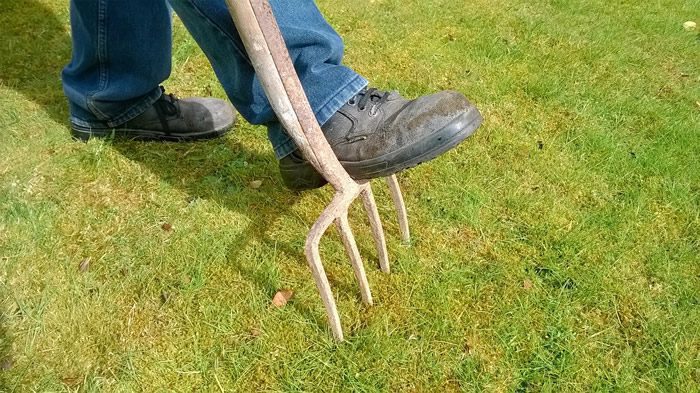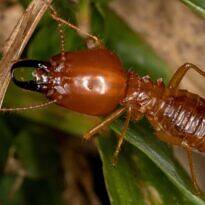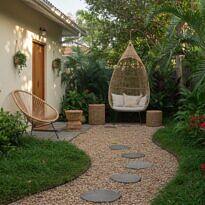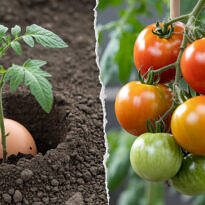The underlying principle behind soil aeration is that, much like you, plant roots need to breathe. Aeration involves perforating the soil or removing small plugs to allow air, water, and nutrients to penetrate and reach the roots. This helps them grow and stay healthy. Aeration is even more critical in compacted soils, whether due to natural factors over time or from heavy foot traffic. Lawns in high-traffic areas, walkways, sports fields, and more, become the primary crops that require regular aeration.
Compaction occurs naturally as time passes and the organic matter we apply to the soil is consumed by microorganisms. Gradually, the soil loses its structure, which enables the formation of macro and micropores, responsible for aeration and permeability. Clayey soils tend to compact more severely than sandy soils. However, sandy soils are not immune to the issue either.
Common day-to-day activities like walking on the lawn, maneuvering and parking vehicles, playing ball with children, and even the bustling of pets, all contribute to significant compaction. It’s essential to understand that compaction is cumulative—it doesn’t alleviate over time; it only worsens.
When the soil becomes compacted, even if only on the surface, essential elements necessary for healthy plant growth can’t flow properly. Water, air, and nutrients stagnate, causing plants to lose their vibrancy. Aeration creates holes in the soil that relieve this compaction, allowing air, water, and nutrients to reach the roots.
Lawns and other ground covers subjected to constant trampling, when deprived of their basic needs due to compaction, struggle doubly to withstand elements like heat, rain, frequent trimming, and foot traffic. Over time, the foliage becomes sparse, with patches, turning yellow and weak—vulnerable to various pests and diseases, potentially even dying. A simple aeration paves the way for these essential elements to reach the roots, revitalizing plant growth.
The accumulation of thatch, known as “thatch,” which occurs in some grass species, also hinders soil aeration. Consequently, even well-maintained lawns gradually become impermeable.

The optimal time to aerate the soil is during its peak natural growth phase. Never aerate dormant lawns, as grass might be slightly stressed by this operation. Therefore, always aerate during spring or summer when growth is active. Aeration coinciding with active growth ensures that grasses recover swiftly, filling in areas where the aerator equipment exposes the soil.
Aeration becomes more manageable for both you and your lawn when the soil is damp due to irrigation or rain from the previous day. Moisture softens the soil, making equipment use more straightforward. Still, be cautious—don’t aerate waterlogged lawns after prolonged or torrential rains; wait a few days.
Aeration tools and equipment can generally be categorized into three main types:
- Spike aerators: These consist of spiked protrusions that simply push the soil aside, creating holes. Aerating sandals with pointed locks attached to shoes or even a garden fork can be used. There are also mechanical or electric machines that operate on this principle. These aerators can assist on a small scale but risk exacerbating compaction by pressing the soil around the holes.
- Slice aerators: These feature rotating blades that cut through the grass and soil, resembling small plows that superficially cultivate the lawn. Like spike aerators, slicing aerators don’t remove soil but create pathways for air, water, and nutrients without causing further compaction.
- Core or plug aerators: These are favored by gardeners. These devices use rows of hollow tines that remove plugs of soil from your lawn and deposit them on the surface, where they break down. The size of the plugs and the holes they create vary in width and depth depending on the machine used. After aeration, removing the plugs from the surface is unnecessary; they disintegrate, releasing nutrients back into the lawn.
You can hire a lawn aeration service (which might not be readily available) or do it yourself. For this, you’ll need to acquire or rent the necessary equipment. Machine aeration is quite similar to mowing. Focus on the most problematic areas, such as natural paths formed by pets in the yard. Make multiple passes in different directions for thorough coverage. Right after aeration, the lawn might appear unsightly, with the thatch usually hidden becoming exposed on the surface. Yet gradually, the grass will grow vigorously, improving its appearance. When equipment isn’t available or for smaller areas, aeration can be done with spike sandals or a fork.
Aeration should be performed annually to ensure your lawn reaches its full potential in terms of health and beauty. Directly after aeration is the ideal time for applying fertilizers and replenishing organic matter in the lawn.
Mix two parts of medium sand with one part of suitable lawn substrate, such as peat or organic compost (composted vegetable soil at over 140°F). Alternatively, you can use Carolina substrate or another type intended for seeding. Never use manure, black field soil, or soil of unknown origin in lawns, as they often contain numerous weed seeds.
To this mixture, add the correct proportion of fertilizers for the area to be covered and spread evenly over the aerated lawn. Water generously. Maintain a mowing schedule based primarily on the recommended height for each grass species.
In garden beds or vegetable gardens, aeration is simpler and can be done during their renewal with tools like a hoe, shovel, and manual forks. Don’t forget to add ample organic matter, worm castings, along with a good mulch cover in this case, to structure and protect the soil.







